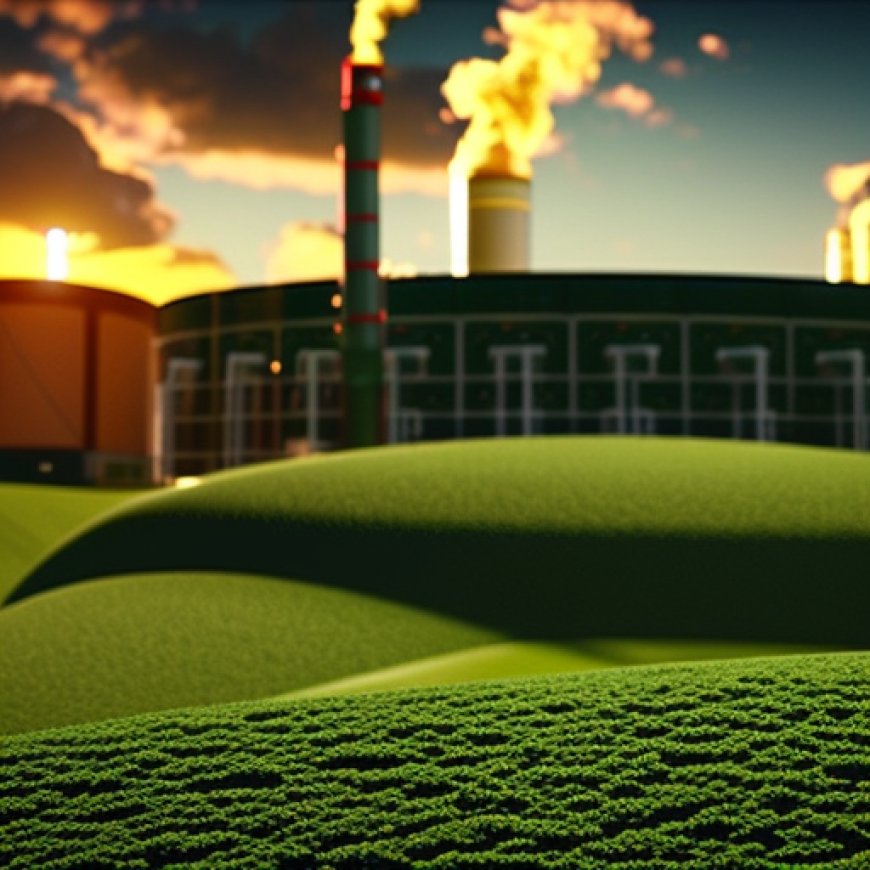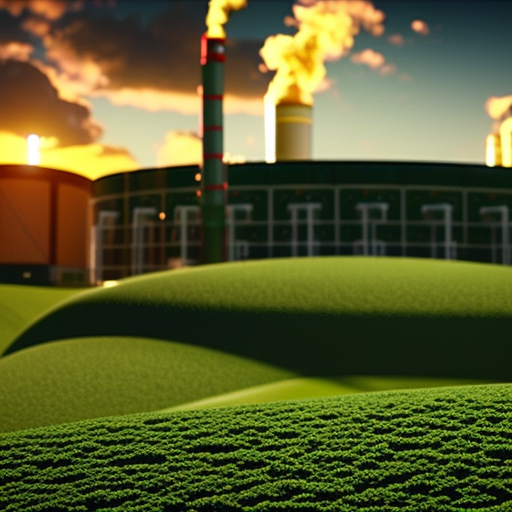Biogas – True North Renewable Energy Gets Conditional Use Permit to Construct Anaerobic Digestion Facility – Renewable Energy Magazine, at the heart of clean energy journalism
Biogas - True North Renewable Energy Gets Conditional Use Permit ... Renewable Energy Magazine


Kern Organics Renewable Energy Facility
The Kern Organics Renewable Energy Facility is a project that aims to process SB 1383 diverted organics in a sustainable manner. With state-of-the-art infrastructure, the facility will have the capacity to handle 300,000 tons per year (1,000 tons per day) of various organic materials. These materials include food scraps, organic scraps from municipal solid waste, yard trimmings, green waste, compostable material (such as vegetable and yard waste), commingled food and green waste, industrial commingled food, packaged food waste from grocery and retail stores, and liquid waste (residual moisture/liquids generated from solid municipal waste and food waste).
Processing Solution for Commingled Organic Streams
The Kern Organics Renewable Energy Facility offers a processing solution for commingled organic streams from both residential and commercial sources. It utilizes an integrated anaerobic digestion and advanced composting system. This system not only produces pipeline quality renewable natural gas but also compost, which can be used as a nutrient alternative in the Kern County agricultural market. The facility will fully comply with Kern County’s expectations, conditions, and compliance components during construction and operations. Construction is scheduled to begin in 2024, with the facility expected to be operational by 2027.
Supporting Sustainable Development Goals
The construction of the Kern Organics Renewable Energy Facility is expected to have a positive impact on Kern County’s economy. It will create new green jobs and contribute to capacity-building efforts in support of SB 1383 in a rural jurisdiction. This project aligns with the Sustainable Development Goals (SDGs), particularly Goal 13 on climate action. Given the urgency of climate change and the need to reduce short-lived climate pollutant (SLCP) emissions, projects like this one play a crucial role in meeting California’s organics diversion targets and climate goals.
Partnership with Kern County
Gary Aguinaga, President of TNRE, expressed his enthusiasm for partnering with Kern County on this project. TNRE aims to provide state-of-the-art, large-scale, regional organics processing facilities. The company recently achieved a major milestone by being awarded a Conditional Use Permit (CUP) after a two-year application process. TNRE acknowledges Kern County’s ongoing support for the project and the message it sends to the state regarding the importance of obtaining permits for facilities that contribute to climate action. To meet California’s methane reduction targets and renewable energy needs, more facilities like TNRE’s Kern County organics-to-energy facility will be required.
Aguinaga also emphasized the importance of securing organic waste feedstock agreements to prepare for higher food diversion rates in the future. Developing and constructing new infrastructure, such as anaerobic digestion or advanced composting facilities, is crucial for achieving sustainable waste management practices.
SDGs, Targets, and Indicators
| SDGs | Targets | Indicators |
|---|---|---|
| SDG 7: Affordable and Clean Energy | 7.2: Increase the share of renewable energy in the global energy mix | No specific indicators mentioned in the article |
| SDG 8: Decent Work and Economic Growth | 8.5: By 2030, achieve full and productive employment and decent work for all women and men, including for young people and persons with disabilities, and equal pay for work of equal value | No specific indicators mentioned in the article |
| SDG 12: Responsible Consumption and Production | 12.3: By 2030, halve per capita global food waste at the retail and consumer levels and reduce food losses along production and supply chains, including post-harvest losses | No specific indicators mentioned in the article |
| SDG 13: Climate Action | 13.2: Integrate climate change measures into national policies, strategies, and planning | No specific indicators mentioned in the article |
| SDG 15: Life on Land | 15.3: By 2030, combat desertification, restore degraded land and soil, including land affected by desertification, drought, and floods, and strive to achieve a land degradation-neutral world | No specific indicators mentioned in the article |
1. Which SDGs are addressed or connected to the issues highlighted in the article?
- SDG 7: Affordable and Clean Energy
- SDG 8: Decent Work and Economic Growth
- SDG 12: Responsible Consumption and Production
- SDG 13: Climate Action
- SDG 15: Life on Land
The issues highlighted in the article are connected to these SDGs because they involve the sustainable processing of organic waste, renewable energy production, economic growth through job creation, responsible consumption and production practices, and climate action.
2. What specific targets under those SDGs can be identified based on the article’s content?
- Target 7.2: Increase the share of renewable energy in the global energy mix
- Target 8.5: By 2030, achieve full and productive employment and decent work for all women and men, including for young people and persons with disabilities, and equal pay for work of equal value
- Target 12.3: By 2030, halve per capita global food waste at the retail and consumer levels and reduce food losses along production and supply chains, including post-harvest losses
- Target 13.2: Integrate climate change measures into national policies, strategies, and planning
- Target 15.3: By 2030, combat desertification, restore degraded land and soil, including land affected by desertification, drought, and floods, and strive to achieve a land degradation-neutral world
The article’s content aligns with these targets as it discusses the increase in renewable energy production, the creation of new jobs, the reduction of food waste through organic waste processing, the importance of climate change measures, and the potential impact on land and soil restoration.
3. Are there any indicators mentioned or implied in the article that can be used to measure progress towards the identified targets?
No specific indicators are mentioned or implied in the article that can be used to measure progress towards the identified targets.
Behold! This splendid article springs forth from the wellspring of knowledge, shaped by a wondrous proprietary AI technology that delved into a vast ocean of data, illuminating the path towards the Sustainable Development Goals. Remember that all rights are reserved by SDG Investors LLC, empowering us to champion progress together.
Source: renewableenergymagazine.com

Join us, as fellow seekers of change, on a transformative journey at https://sdgtalks.ai/welcome, where you can become a member and actively contribute to shaping a brighter future.







